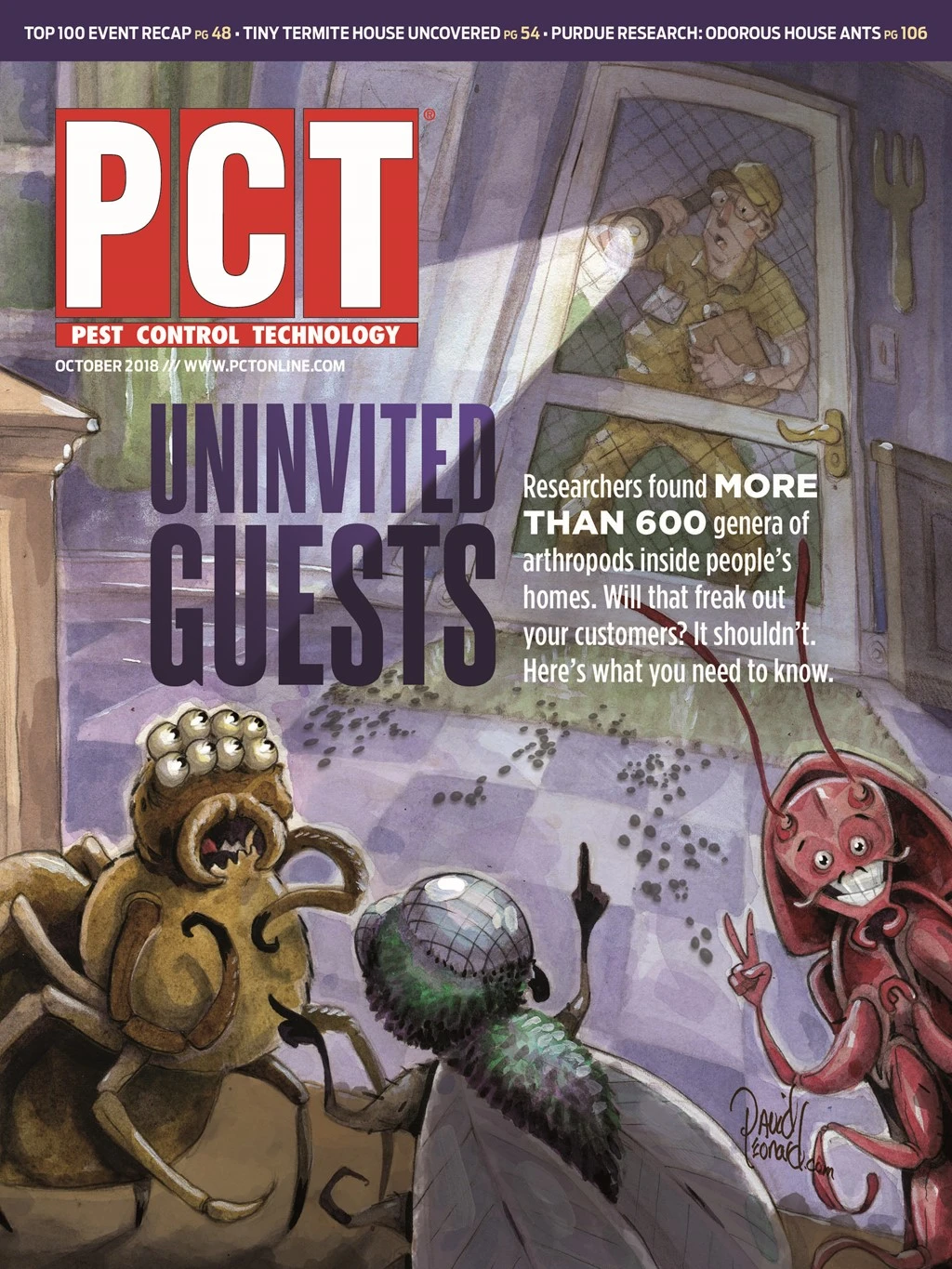
1. How do you determine if a WDO job needs a spot treatment or a large-scale treatment?
A proper inspection of the structure will help determine the severity of the infestation and species in question, which will determine the treatment method. For example, a localized drywood termite infestation can be spot-treated, but if there are multiple nests within the structure it will need a large-scale treatment like a fumigation or a whole house Bora-Care treatment (which provides residual protection). It’s also very typical for pests like termites and ants to attack window or door frames, perfect locations for a spot treatment if a PMP knows the infestation is restricted to that area. Careful inspection should reveal the extent of such infestations, allowing the infestation to be quickly eliminated by a spot treatment using a product like the iSTRIKE™ Insecticidal Foam.

2. What type of pests are most common for spot treatments?
Any pest can be spot-treated if their presence is localized. Carpenter bees, carpenter ants and wood-boring beetles are good examples. The key is to make sure the infestations really are truly localized and where. Different species of pests expand their infestations at different rates, making proper inspection especially critical when considering a spot treatment. Drywood termite infestations spread slowly and are a good candidate for spot treatments. Formosan termites, on the other hand, spread rapidly and damage can be surprisingly extensive inside the wood while the outside of the wood can appear fine. Carpenter bees are also perfect for spot treatments. A carpenter bee infestation itself is obvious with its classic perfectly round entrance tunnels on the bottom side of wood. When a PMP injects iSTRIKE Insecticidal Foam into a carpenter bee tunnel entrance, the foam will travel throughout the gallery, often emerging from the wood in very unexpected places! The pressurized foam makes it easy to spot-treat these long tunnels effectively. Carpenter ants are another wood-destroying pest often missed by homeowners, but luckily, they also spread slowly, often taking several months to infest a large area. If they are detected in a routine inspection, they can be spot-treated effectively. Many wood-boring beetle species have a long emergence period, making spot treatments a viable option.
3. Are spot treatments effective?
Yes, spot treatments are very effective and as a result, they have the potential to save homeowners the inconvenience and expense of a larger treatment. Spot treatments can stop the pest problem immediately at the localized treatment site, allowing the PMP to return for any additional inspections and/or other treatments. For example, if we consider drywood termites again, we know they actually expand their structural infestations very slowly. A spot treatment of a known infestation has a very good chance of stopping them in their tracks. After spot-treating, a PMP should follow up the next year with a careful inspection, including checking for damage and the sounds of termites at work among other indicators to make sure the termites have been completely eliminated. In addition to application of the pest control product itself, the PMP should always practice pest-appropriate integrated pest management techniques such as sealing entrances and controlling harborage to help prevent any new infestations before the next inspection.4. You mentioned iSTRIKE. What are the advantages of using iSTRIKE for spot treatments?
iSTRIKE is an insecticidal foam that kills WDOs on contact, leaves a good residual for preventing a potential re-infestation and allows the PMP to conduct localized treatments with minimal effort and cost. An excellent example of this is carpenter bee treatments. Homeowners can be frustrated by the kind of work typically involved in treating carpenter bees. In the spring when bees emerge, an insecticide is often sprayed where the bees are active, then an insecticidal dust is puffed in the holes and galleries in an attempt to coat the sides so both emerging and adult bees will be coated and killed by the dust. After that, the PMP comes back to plug the holes in the fall with wood putty or wooden dowels. With iSTRIKE, the PMP simply injects the pressurized insecticidal foam into the holes and galleries. Dusting and plugging the holes are not required. It’s cleaner, faster and very effective.
5. Can iSTRIKE help with large-scale treatments?
Yes. iSTRIKE gives the PMP greater ability to treat hard-to-reach areas when conducting large-scale treatments. For example, when controlling carpenter bees, one can treat the galleries upon initial inspection, then return later to treat all the wood members with Bora-Care to prevent fungal decay and rot. Another way an iSTRIKE spot treatment could help is to slow down the spread of a large WDO infestation until a larger treatment can be done if circumstances prohibit it immediately. Many PMPs use iSTRIKE as a closing tool for the larger jobs, letting homeowners know that if they approve the job the PMP will begin spot treatment immediately and follow-up with a full treatment as soon as it can be scheduled.
For More Information
If you would like more information about iSTRIKE or spot treatments for a variety of wood-destroying insects, call your Nisus sales representative or visit www.nisuscorp.com/strike.





Explore the October 2018 Issue
Check out more from this issue and find your next story to read.